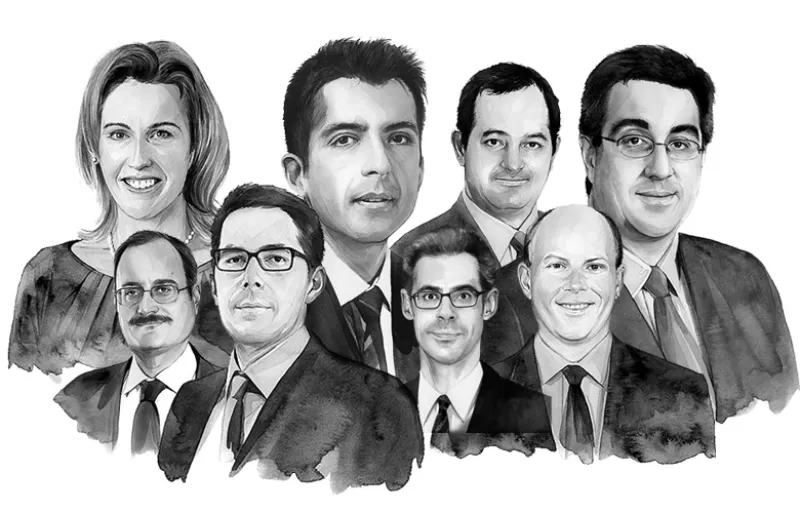For the full AART Rankings, click here.
The equity research industry is venturing into uncharted territory.
The long-awaited change in European regulation — the revised Markets in Financial Instruments Directive, or MiFID II — will go into effect next year, with ripple effects that will spread across the globe. Meanwhile, the rise of big data and the investor shift to passive products threaten the usefulness of the sell side, doubling the pressure on analysts to prove their worth as research costs are unbundled.
Yet the 46th edition of Institutional Investor’s All-America Research Team shows, at first glance, an industry little changed: JPMorgan Chase & Co. once again took the crown as the best American research firm, with the bank’s analysts recognized in 42 of the 60 investment sectors covered in the annual survey of money managers.
Second-place Bank of America Merrill Lynch and third-place Evercore ISI also held on to their spots from last year, as did fourth-place UBS, which this year tied for the position with Barclays and Morgan Stanley.
Out of the 60 analyst teams recognized this year as the foremost experts in their area of coverage, 41 placed first last year too. And just nine categories featured brand-new champions — analysts making first team for the first time.
Meanwhile, only one analyst — Bernstein’s Ali Dibadj, covering beverage, household, and personal care products — broke into the All-America Research Team Hall of Fame, the division of the elite analysts who have made first team ten times or more.
This entrenchment of the country’s top-rated analysts could be a sign of the lasting influence of the industry’s dominant players: Come market shifts or regulation overhauls, the buy side keeps coming back to its favorite sell-side research teams.
But it also illustrates the high barrier to entry for new equity analysts — a barrier that will only get higher as the challenges facing the sell-side research industry mount. At worst, it points to a crisis in talent development, with new entrants to the first team coming from just four firms: Bernstein, Evercore ISI, JPMorgan, and UBS.
This year, Institutional Investor highlights the newcomers to the first team and Hall of Fame, analysts recognized in such innovative categories as technology and health care. All eight recognize the challenges ahead — and the work to be done if they’re to stay on top.
 AD
AD

Ali DibadjPartner, senior analyst, Bernstein
1T: Consumer — beverage, household, and personal care products
Best call you ever made?The best calls we make are typically the ones where we see a company isn’t living up to its potential and, on the investors’ behalf, we convince the company to change or improve. In that context, a few stand out to me: Pushing Procter & Gamble to cut costs and change its portfolio; insisting Coca-Cola become price rational; maintaining that Estee Lauder needed to expand its distribution and cut costs; pushing Energizer to improve its ESG [environmental, social, and governance awareness].
Worst call you ever made?
The one that continues to sting the most remains taking my sell rating off of Avon. We claimed victory after the stock underperformed 12 percent — we were still very negative about the stock, but we did not have a sell rating on the stock and we should have. We should’ve wrote the stock down another 85 percent, because it literally went down another 85 percent. Our concerns did play out but they played out much more aggressively than we predicted.
Non-family member who influenced your career the most?
I don’t know if I have an individual person — I’m a big believer that people are just a product of their ecosystem. I spent about a decade each on the sell-side and in management consulting, and I’ve been able to speak with really the smartest clients on a daily basis. I’ve also won the lottery on the teams I’ve worked with, which have been some of the best people around. So it’s tough to single out one or two people.
Biggest challenge facing the sell-side research industry?
The biggest challenge facing the sell side is the same challenge that’s facing the buy side: passive investing. Arguably it can also be an opportunity, because it forces investors to run more concentrated portfolios, know the companies deeply, and engage with companies to close some of the value or growth gaps. The sell side should be equipped to help, but that’s the biggest challenge.
Biggest challenge facing the sector you cover right now?
The pressure on legacy or incumbent brands from continued media fragmentation and big shifts in retail. Brands were formed with mass media, which has become fragmented, and by partnering with the same retailers — and both of those are changing. Mass media isn’t as prevalent now and there are many new retail channels such as ecommerce.
If a client needed to know one thing about your area of coverage, what would you tell them?
From a stock-picking perspective, I would say be selective. These stocks are trading around about the same valuations, but I think they’ll have very different paths going forward.
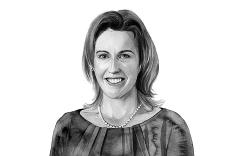 LE
LE

Lisa EllisSenior research analyst, Bernstein
1T: Technology, media, and telecommunications — payments, processors, and IT servicesBest call you ever made?Visa, specifically Visa’s acquisition of Visa Europe. We got the sense that deal was going to happen and published heavily on it a month before it first leaked in the press. We shifted Visa to our top pick and raised our target price twice in anticipation of the deal, which was finally announced in November 2015. In the six-month stretch from when we initially published on the deal to when it was announced, the stock was up 20 percent. Since then, it’s up over 60 percent.
Worst call you ever made?
Three years ago we made a call in IT services that the cloud wasn’t going to hurt the industry because all of the budget freed up by the cloud was going to flow into digital — this new class of technologies that required tons of high-value IT services. We made this big counter-consensus industry call, and completely, utterly failed to make the stock call with it. We left Accenture at neutral, and the stock went up 40 percent in the 18 months after that. The worst part is, we revisited the call after the stock was up maybe 15 percent and very explicitly made another decision not to upgrade it, because we thought we had missed it.
Non-family member who influenced your career the most?
II Hall of Famer analyst Toni Sacconaghi, who covers the IT hardware space. He sits in the office next to me, and since I came to Bernstein four years ago, he’s been a tremendous role model — very collaborative and always happy to help. Plus, I’m short — only 5-foot-3 — and he’s really tall, so he helps me reach things on high shelves.
Biggest challenge facing the sell-side research industry?
MiFID II. I’ve only been in the industry four years, but I know the answer to that question! At the end of the day, the regulation offers a great opportunity for really good, differentiated analysts to rise above — but getting there is going to be really tough. There will be collateral damage.
Biggest challenge facing the sector you cover right now?
In payments, the biggest challenge facing the companies we cover is probably the Chinese players who are actively expanding outside of China, and the potential disruption they may create.
If a client needed to know one thing about your area of coverage, what would you tell them?
The secular growth in the payments industry is really a rising tide driven by the slow, steady displacement of cash and checks. Unit volume growth has been 11 percent globally for the last ten years and will be 11 percent for the next ten years; it’s very, very consistent. It is not a zero-sum industry like Amazon disrupting retail, or Netflix disrupting media — everyone wins. The only losers are check printers, criminals, and maybe armored car companies that used to truck around the cash.
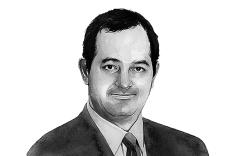
Zalman (Shneur) GershuniManaging director, UBS
1T: Energy — natural gas
2T: Energy — master limited partnershipsBest call you ever made?One of the best calls we’ve made was downgrading upstream MLPs early on in the oil price collapse cycle, given how they did after the fact. Oil prices started really falling early — we recognized that and got ahead of it.
Worst call you ever made?
Worst call I ever made was actually one I didn’t make, and should have made, in hindsight. In the summer of 2015, we outlined gray-sky scenarios that could have serious consequences for MLPs, but we didn’t take any real rating actions — we didn’t pair that with a downgrade. It’s a call that we saw, that we had a feel for, and didn’t make.
Non-family member who influenced your career the most?
One person in particular is a guy named David Shore, who’s a little older than I am and someone I saw frequently in our local synagogue when I was in college. He took the time to talk to my friends and me about finance. He had just gotten this cool job in equity research. He had just gotten a CFA and convinced me to take the exam. He’s one of the key non-family members who has influenced me in my career choice and where I’ve ended up.
Biggest challenge facing the sell-side research industry?
The most topical big thing we’re focused on these days — where nobody really knows how the outcome is going to play out — is MiFID II. The unbundling of research and complying with a bunch of European regulations is changing the way people look at the research departments and how they value the research analysts. There could be some broad implications — could be positive, could be negative.
Biggest challenge facing the sector you cover right now?
Natural gas has really benefited over the last few years because of pipeline replacing, which has been a key driver of earnings growth. As a result, the sector has moved significantly higher, and at the same time there has been a beneficial backdrop of low interest rates. There has also been a quest for income by investors, and that’s helped drive valuations.
The sun is starting to set on those growth opportunities. The challenge for investors will be to separate those companies that will continue to have opportunities to invest and grow on the pipeline replacement cycle. There will be an earnings-growth cliff in the next two years and significant separations in valuations.
If a client needed to know one thing about your area of coverage, what would you tell them?
One thing investors need to focus on right now is the price-earnings to growth ratio — looking at growth rates and how they change on a three-year basis versus a five-year basis.
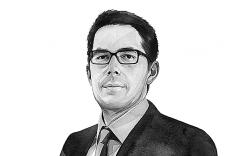 DLB
DLB

Dubravko Lakos-BujasHead of U.S. equity strategy and global quantitative research, JPMorgan
1T: Economics and strategy — portfolio strategy
1T: Economics and strategy — quantitative researchBest call you ever made?In the middle of 2016, we argued that there was an extreme dislocation in the market, with low-vol style and low-vol sectors — bond-proxy staples, utilities, etc. — in a bubble and vulnerable to selloff. We called for a significant rotation in the market, with value style and value sectors like financials taking the leadership. In addition to fundamental analysis, understanding of equity sensitivities to macro trends and to changing market structure — such as proliferation of smart-beta products — was instrumental in formulating this view in a timely manner.
Worst call you ever made?
In the middle of 2015, we expected U.S. multinationals to outperform domestic stocks after a sharp rise in the U.S. dollar and normalizing growth abroad. In retrospect, this relative-value trade did not play out until later due to further appreciation in the dollar and continued divergence among central bank policies.
Non-family member who influenced your career the most?
While many people have influenced my career, there are two I would like to highlight. More recently it has been Marko Kolanovic at JPMorgan, global head of our macro quantitative and derivatives strategy group, who supported my initiative of integrating traditional equity strategy and quantitative research to best serve our clients. He fosters a healthy, collaborative, and, most importantly, innovative and intellectually stimulating environment in our team. Also, at the start of my career on the buy side, I was positively influenced by Janet Campagna, then at Deutsche Asset Management, who was an early adopter of blending quantitative and qualitative research.
Biggest challenge facing the sell-side research industry?
This industry can often suffer from high volume and low differentiation of research — an opinion frequently shared by global investors.
Biggest challenge facing the sector you cover right now?
Global financial markets are becoming more intertwined and market structure is quickly evolving with new investor types and new products emerging, while technological innovation and proliferation of new data are speeding up market reaction. These factors are leading to higher complexity and increasingly require new and innovative approaches for equity analysis.
If a client needed to know one thing about your area of coverage, what would you tell them?
Considering those challenges, I think it is becoming increasingly important to adopt an integrated approach when conducting research that effectively blends different disciplines — from bottom-up fundamental to top-down macro analysis — while adopting quantitative and big-data techniques. This is what our team has been actively adopting.
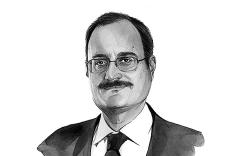
Mark MoerdlerManaging director, SVP, and senior research analyst, Bernstein
1T: Technology, media, and telecommunications — softwareBest call you ever made?Probably Microsoft. I became an analyst after 25 years in the software space. When I joined Bernstein, I felt Microsoft was doing interesting stuff, but the Street didn’t like Microsoft. I started pushing the story of the cloud opportunity. Investors were so convinced I was absolutely wrong, and it proved to be absolutely correct.
Worst call you ever made?
I downgraded Workday, believing the ability of the stock price to increase was over. The management there had adopted a new reporting standard — ASC 606 — for revenue recognition. And they were doing it earlier than other companies. Even though I really liked the company and I really liked the story, I thought it was well priced where it was. But the stock continued to move up.
Non-family member who influenced your career the most?
Victor Wright was a member of the board of my software company, MDY Advanced Technologies, and a mentor for much of my career. He was influential in my decision to become a sell-side research analyst and join Bernstein.
Michael Christenson was the COO at CA Technologies when I sold my software company to CA and has been a good friend and adviser ever since. His Wall Street and software markets experience has been invaluable.
Biggest challenge facing the sell-side research industry?
If you’re Eurocentric, you’re talking about MiFID II. If you’re more U.S.-centric, you’re talking about the move to ETFs — the fact that money is moving out of active and into passive, which shrinks the size of the pie. Combined with MiFID II, there’s double pressure on the sell side.
And the availability of information is increasing significantly because of the internet, because of big data. That levels the playing field away from people who just focus on stocks.
Biggest challenge facing the sector you cover right now?
Software is in the middle of multiple transitions, the biggest of which is the move to the cloud. We’ve seen very successful cloud transitions, but there’s still a lot of lack of clarity in the transition and the economic impact of the transition at many companies. They don’t give you enough data; they don’t help you enough in understanding what is happening, and that lack of transparency creates significant misunderstanding in the investor community, with people either believing a company is in the cloud when it is not or believing the company is doing better than it actually is.
If a client needed to know one thing about your area of coverage, what would you tell them?
I would try to give that clarity. I’d explain the economics of the business-model transition, that the move to the cloud drives more revenue because you capture more of IT’s wallet share. If done correctly, the company will capture more revenue with lower margins for more earnings, but not everyone will be able to drive to that efficiency of margins.
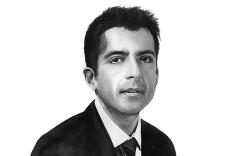
Umer RaffatSenior managing director, Evercore ISI
1T: Health care — biotechnology/large-cap
1T: Health care — biotechnology/mid- and small-cap
1T: Health care — pharmaceuticals/specialtyBest call you ever made?This is a very humbling business and I have been humbled on stock calls. There’s not an, “Oh my God, I nailed that one.” But asking me in 2017 which calls went okay, one is probably Gilead. The stock had been weak, and I think the market underappreciated that their business had started to stabilize. The HIV side of the business — people didn’t truly understand and appreciate it. We upgraded in May when the stock was $64 or $65 a share and now it’s in the $80s.
Worst call you ever made?
One is Valeant, clearly. The second one is Human Genome Sciences.
The biggest lesson for me from Valeant was leverage — just leverage and debt and what they mean to a company and valuation framework. The stock dropped so much because of how much debt Valeant had. The second lesson was that I underappreciated how exposed pharma companies — or that company in particular — are to insurance companies and how much they can change.
Human Genome Sciences was early in my career, and what I got wrong was not doing doctor checks early in the drug launch.
Non-family member who influenced your career the most?
It has to be the person who hired me into the business, and who’s also my mentor: Mark Schoenebaum. Working with him is the only job I’ve had on Wall Street, and he’s taught me everything about it: how to think about the job, how to think about what the focus should be for analysis, prioritizing and managing time — everything.
Biggest challenge facing the sell-side research industry?
MiFID II. It’s going to dramatically change everything. Sell-side analysts and the sell-side industry stand to lose a huge source of revenue, which is commissions from investment funds. It really changes the dynamic of how the sell side, in general, has prioritized investors over the years. Even the biggest and best firms are not immune from it and the shrinking commission pool.
Biggest challenge facing the sector you cover right now?
Drug pricing continues to remain the key topic for the industry — drug pricing, drug pricing increases, and whether there will be any value pricing.
If a client needed to know one thing about your area of coverage, what would you tell them?
That 2018 might be a big M&A year. There are a lot of things pointing toward it, like possible tax reform, for example. There are also some very important drug trials that will affect where companies stand. It’s shaping up to be large year, with big pharma companies sitting on a lot of cash and looking to deploy it. Tax reform and big drug trials will spur that cycle.
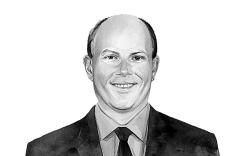 GS
GS

Glenn SchorrSenior managing director/senior research analyst, Evercore ISI
1T: Financial institutions — brokers, asset managers, and exchanges
RU: Financial institutions — banks/large-capBest call you ever made?Pre-election, I was very positive on all five big banks. For the first time I recommended JPMorgan, Bank of America, Citi, Goldman Sachs, and Morgan Stanley — and it was absolutely not because I knew Trump was going to win. I just thought they were healing themselves — cutting costs and growing a little bit. And they were pretty cheap going into the election with a lot of upside. It wound up working out.
Worst call you ever made?
I had grown cautious back in the time of the crisis to the tune where — a rarity — I had no recommendations during the thick part of the crisis. But the worst call I ever made was that I wasn’t negative enough: I didn’t downgrade all these companies to “sell.” In hindsight I should’ve been more negative.
Non-family member who influenced your career the most?
My boss when I first entered the sell side was George Bicher, today a portfolio manager at SSGA [formerly GE Asset Management]. He taught me how to be an analyst and how to analyze a bank. I asked him, whenever he thought I was ready and able, to please support me to be a senior analyst and get stocks of my own. And he said, “Of course.” When I was ready, he bent over backwards to make sure the firm supported me and got me coverage of stocks.
Biggest challenge facing the sell-side research industry?
Without question it’s MiFID II, which is coming into effect in Europe in January but is already having a pretty big impact across the industry. When you take the buy side out of its all-you-can-eat buffet and put it in a la carte, they consume less and they only consume what they know is good. It has been and will continue to be a big challenge for the sell-side research industry to adapt and adjust to.
Biggest challenge facing the sector you cover right now?
For asset managers, MiFID II is a challenge. The other enormous challenge is the large trend of actively managed assets becoming passive assets, and that goes hand in hand with fee compression and reduced volumes for asset managers and brokers.
If a client needed to know one thing about your area of coverage, what would you tell them?
On the broker side: Volumes and volatility will not be this low forever. We will see a pickup of activity at some point.
On the bank side: Low interest rates and the flat yield curve will not be this low and this flat forever. You will see a pickup of inflation at some point.

Eric SheridanManaging director, UBS
http://www.ubs.com/1T: Technology, media, and telecommunications — internet
Best call you ever made?I upgraded Facebook in late June 2013 to a buy, on the back of the digital advertising checks the team and I do every quarter. We saw an inflection point coming and turned out to be right — the stock has since gone up from $20 a share to $170.
Another call was upgrading Amazon in July 2015. It was around $450 a share then and now it’s just shy of $1,000. We believed Amazon Prime users were about to accelerate. It’s what we call the Amazon Prime flywheel — new users into the loyalty program leading to more consumption leading to more revenue.
Worst call you ever made?
I put a sell rating on Yelp when it was priced in the low $20s and that stock is now around $43 a share. We believe that scale is one of the big advantages of internet business models and we believed Yelp was a subscale player that would have to invest a lot in the brand. Some of that has come to fruition — the stock has been very volatile. We still believe there are a lot of secular challenges that hurt smaller companies like Yelp.
Non-family member who influenced your career the most?
For eight years I worked at Intrepid Capital Management under Steve Shapiro, a Tiger Cub who came out of Tiger Management. Working for Steve for eight years, I learned a lot about how to analyze businesses, how to measure risk and reward, how to think through probabilities of outcome, and, most importantly, how to do the job and how to work hard.
Biggest challenge facing the sell-side research industry?
The shift to MiFID II and the unbundling of research puts the value that research adds for clients under a microscope. Sell-side analysts like me have to prove the value of their written research.
Biggest challenge facing the sector you cover right now?
The industry has grown to such a scale and scope with the companies being as large and important as they are. The specter of regulatory oversight on topics like market-share gain and the use of personal information — those are regulatory shifts that we have to watch over the next couple years as the Amazons and Facebooks and Alphabets become more important to the broader economy.
If a client needed to know one thing about your area of coverage, what would you tell them?
What we try to emphasize is that, at the end of the day, the most important attribute is scale and using that scale to continue to grow moats around those internet ecosystems — to strike a balance between investing to grow and investing to diversify into new businesses.
Understanding that reinvestment paradigm — to grow and diversify and compete with one another on a global scale — is the most important secular theme for these companies.



